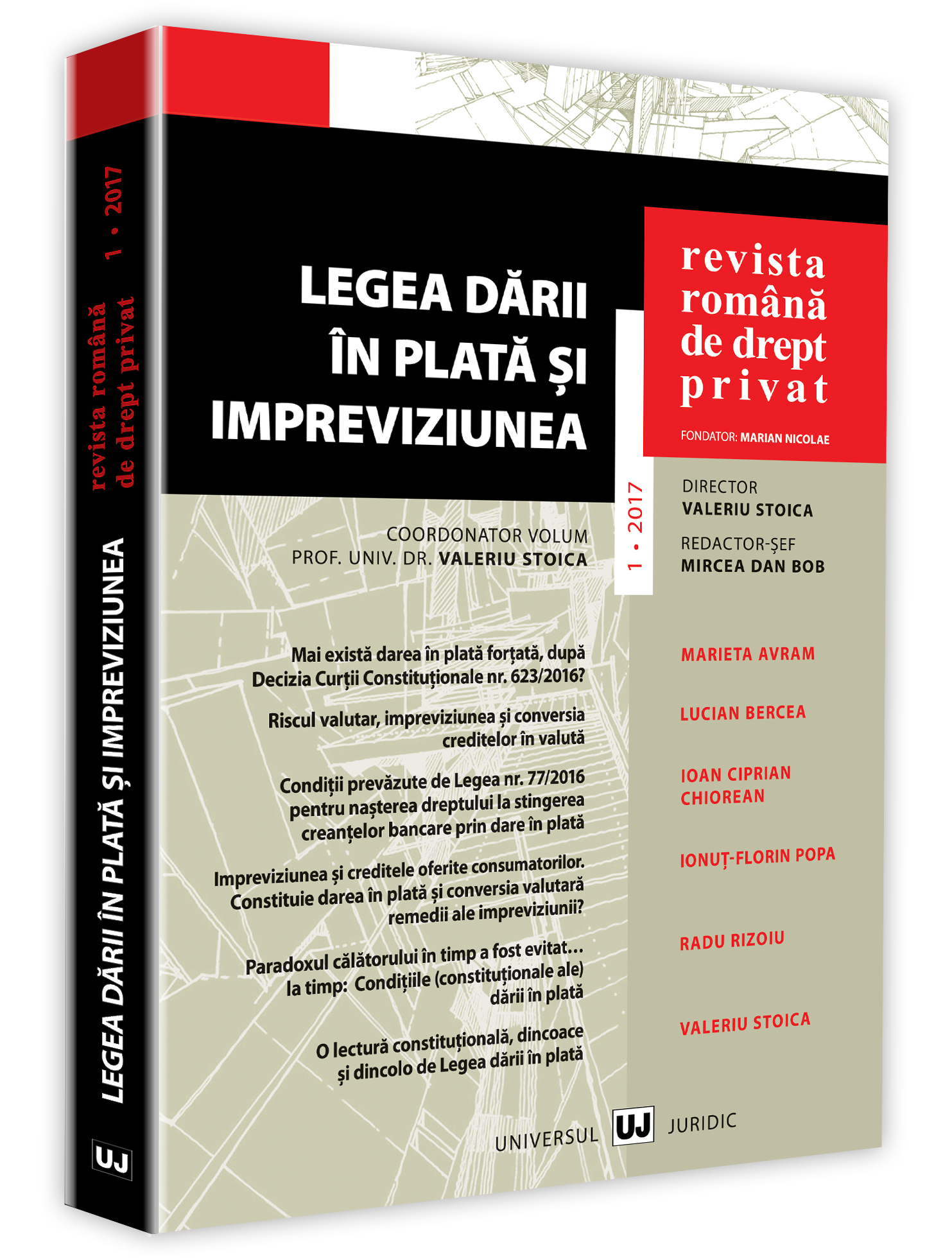Mai există darea în plată forţată, după Decizia Curţii Constituţionale nr. 623/2016?
Is there anymore the forced giving in payment, after the Decision of the Constitutional Court no. 623/2016?
Author(s): Marieta AvramSubject(s): Law, Constitution, Jurisprudence
Published by: Universul Juridic
Keywords: Law no. 77/2016; Decision of the Constitutional Court no. 623/2016; theory of the hardship clause; forced giving in payment; loan agreement; adjustment of the agreement; termination of the agreement;
Summary/Abstract: Nearly three months after its ruling, the Constitutional Court provided us with a reasoning of the Decision no. 623 of 25 October 2016, in which it allocates an extended space to the theory of hardship subject to the old Civil Code, both in terms of admissibility conditions and of the effects of the hardship clause.After we get over the delusion of the theory of hardship clause, by which the Constitutional Court carried out the connection between the old and the new Civil Code and in which it carefully rendered or avoided the problems related to Law no. 77/2016 and, especially, the problem of retroactivity, the fundamental question addressed to the Constitutional Court still remains in a grey area: is the forced giving in payment possible? In other words, is it possible that the creditor be obliged to take the mortgaged immovable property in payment, for the purpose of discharging all debts of the debtor, in the event that the conditions of the hardship clause are met in the system of the old Civil Code? This article intends to provide answers to these questions, as the author considers that, after rendering the Decision of the Constitutional Court, we could no longer discuss about a right of new type of consumer, respectively the right to discharge its debt by the giving in payment, and that, in a correct way, the Constitutional Court “deprived” this right from the unconstitutional wish of one of the contracting parties which was conferred to it by the legislator, so that, in essence, it became an ordinary right of claim, subject to the common law, that is the right to claim to the creditor and moreover, to the court of law, the rebalancing of the agreement, by applying the theory of the hardship clause. The article raises the question whether the forced giving in payment is viable and compliant with the theory of the hardship clause, as designed by the Constitutional Court under Decision no. 623/2016, and thus, the author reaches the conclusion that the application of the theory of the hardship clause is, in many respects, incompatible with the forced giving in payment of the mortgaged immovable property, provided for by Law no. 77/2016. The giving in payment of the mortgaged immovable property, obviously remains possible, but only based on the parties’ consent. Under Decision no. 623/2016, the mechanism of the forced giving in payment for the purpose of discharging the debt, to the original end of Law no. 77/2016, only remains a shadow and only in the title of the Law.
Journal: Revista Română de Drept Privat
- Issue Year: 2017
- Issue No: 01
- Page Range: 15-23
- Page Count: 9
- Language: Romanian
- Content File-PDF

